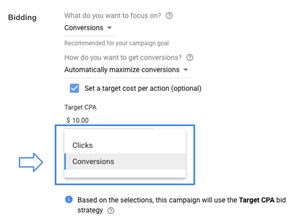Understanding Google Ads: A Comprehensive Guide

Google Ads, also known as Google AdWords, is a powerful online advertising platform that allows businesses to promote their products and services to a vast audience. By leveraging Google’s extensive network, advertisers can reach potential customers across various devices and platforms. In this detailed guide, we will explore the ins and outs of Google Ads, helping you make the most out of your advertising campaigns.
Creating Your Google Ads Account

To get started with Google Ads, you need to create an account. Simply visit the Google Ads website and sign up using your Google account. Once you have an account, you can start creating campaigns, ad groups, and ads.
Setting Up Your Campaign

Your campaign is the foundation of your Google Ads strategy. It defines your advertising goals, budget, and targeting options. When setting up your campaign, consider the following:
| Advertising Goals | Targeting Options | Budget |
|---|---|---|
| Brand Awareness | Geographic Location | Set a daily or monthly budget |
| Sales | Demographic Information | Adjust budget based on performance |
| Lead Generation | Interest-Based Targeting | Allocate budget to high-performing ads |
Choosing the Right Ad Format
Google Ads offers various ad formats, including search ads, display ads, video ads, and shopping ads. Each format has its unique benefits and is suitable for different advertising goals. Here’s a brief overview:
- Search Ads: Appear at the top of Google’s search results when users search for relevant keywords.
- Display Ads: Show on websites and apps that are part of the Google Display Network, reaching a broader audience.
- Video Ads: Run on YouTube and other video platforms, capturing attention with engaging video content.
- Shopping Ads: Display product images and information directly in search results, making it easier for users to find and purchase your products.
Keyword Research and Selection
Keywords are the backbone of your Google Ads campaigns. They determine when and where your ads will appear. To effectively target your audience, conduct thorough keyword research and select relevant keywords that align with your advertising goals.
Writing Compelling Ad Copy
Your ad copy is what convinces users to click on your ad. Write clear, concise, and compelling ad copy that highlights the unique selling points of your product or service. Here are some tips:
- Use action-oriented language to encourage clicks.
- Incorporate relevant keywords to improve relevance and quality score.
- Avoid clickbait tactics that can harm your campaign’s performance.
Optimizing Your Campaign
Optimizing your Google Ads campaign is crucial for achieving the best results. Here are some key optimization strategies:
- Analyze your campaign’s performance regularly to identify areas for improvement.
- Adjust your keywords, ad copy, and targeting based on performance data.
- Use ad extensions to provide additional information and improve ad visibility.
- Leverage automated bidding strategies to optimize your budget allocation.
Measuring Success with Google Ads
Tracking the performance of your Google Ads campaigns is essential to understand their effectiveness. Google Ads provides a range of metrics and reports to help you measure success, including:
- Click-through rate (CTR): The percentage of users who clicked on your ad after seeing it.
- Conversion rate: The percentage of users who completed a desired action, such as making a purchase or filling out a contact form.
- Cost per acquisition (CPA): The average cost of acquiring a customer.
Conclusion
Google Ads is a powerful tool for businesses looking to reach a global audience. By understanding the platform’s features and best practices, you can create effective campaigns that drive results. Remember



